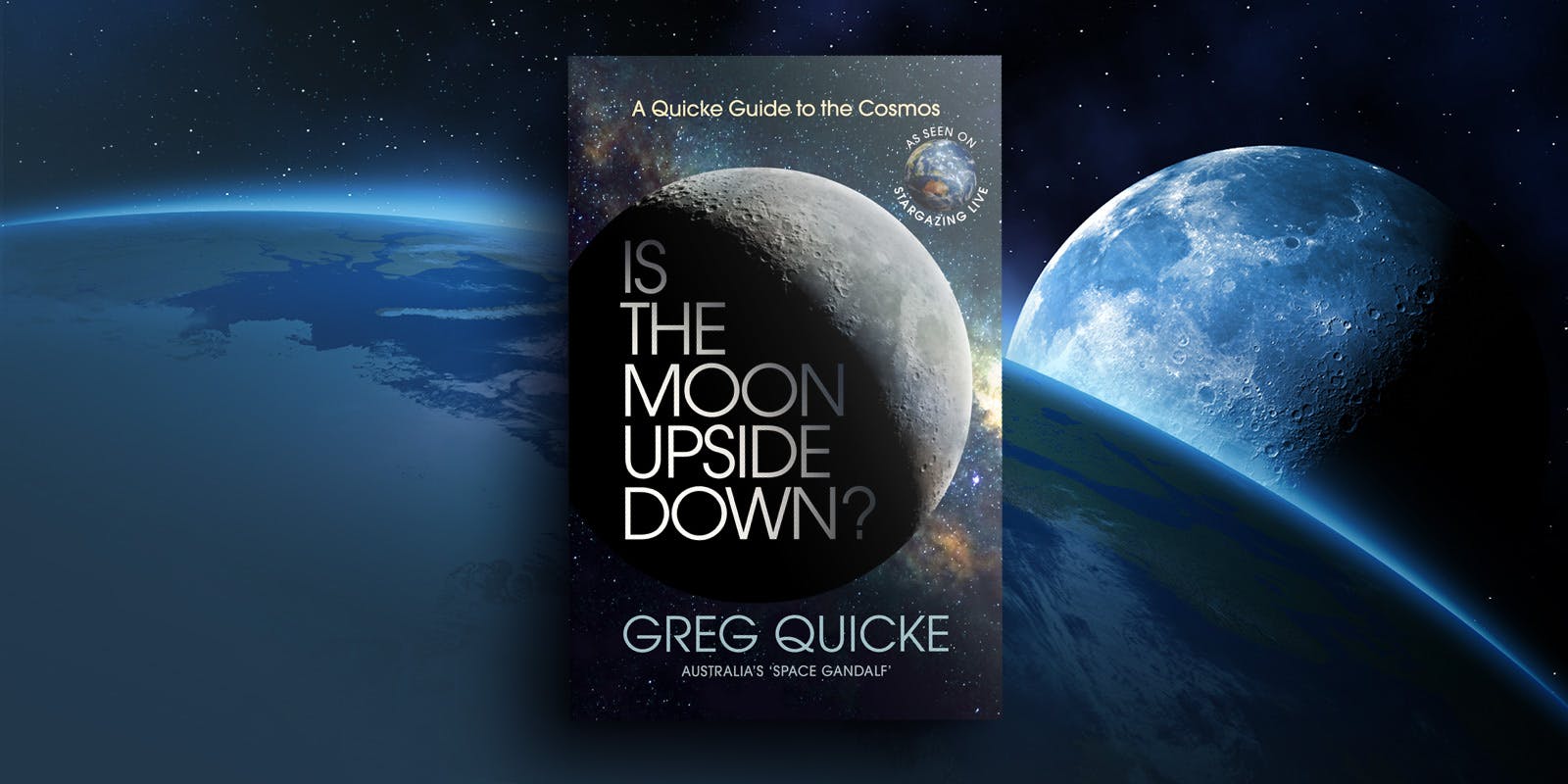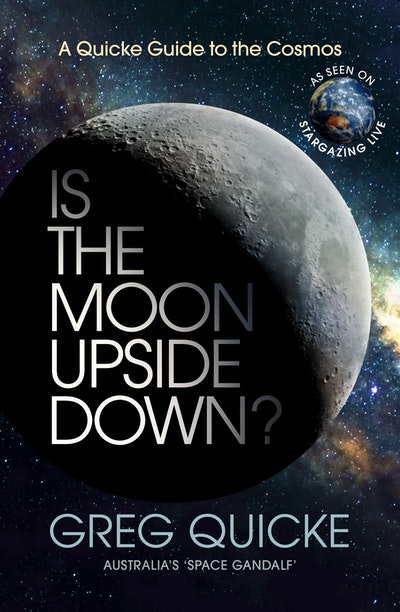‘Space Gandalf’ Greg Quicke puts the magnitude of our solar system into mind-boggling focus.
Over the past 25 years, amateur astronomer Greg Quicke has shared his observations of the night sky with more than 100,000 people at his outdoor observatory, Astro Tours, just outside of Broome. More recently he’s widened that audience to millions around the world, thanks to invitations to appear on the BBC series Stargazing Live and the Australian version of the show on ABC TV, where he played the practical astronomer to Professor Brian Cox’s theoretical particle physicist. He has now presented his own 10-part series on ABC TV, A Stargazer’s Guide to the Cosmos.
Nowadays, the nickname ‘Space Gandalf’ seems to have stuck. And with his book Is the Moon Upside Down? Quicke ponders Earth's astral dance with the Sun, planets, Moon and the stars in more detail than ever before. ‘While I might share a hairstyle with Tolkien’s great wizard, I’m just an ordinary bloke,’ he writes in the book’s introduction, ‘a self-taught bush mechanic and former pearl diver, a motorbike nut and a mad surfer, who has watched in awe as our planet spins and tumbles through the ever-changing universe.’
In Is the Moon Upside Down? Quicke answers all the questions you never knew you wanted to ask about the night sky. In the edited passage below, he breaks down the magnitude of our solar system, in measurements that are easy to understand, if difficult to fathom.
When you move beyond the moon, the distances to other ports of call in our solar system start to get ridiculous, and the numbers end up being almost meaningless: 150 million km to the Sun, between 588 and 968 million km to Jupiter (it varies according to orbit), between 1.2 and 1.7 billion km to Saturn, and a brain-popping 4.28 to 7.5 billion km to Pluto, way out on the edge of our solar system.
I found I needed another way of thinking about these numbers in order to comprehend them, and also to share them with the audiences at Astro Tours. I discovered that shrinking things helped my little earthling brain get a grip on the enormity of it all and allowed me to get it into the heads of my fellow humanity.
1 mm grain of sand
In order to construct a scale model of our solar system, let’s shrink Earth down until it’s the size of a grain of sand with a diameter of 1 mm. On that scale, the moon is a smaller grain of sand one quarter the size of the model Earth.
31 mm
These two grains of sand are 31 mm apart. Earth and the moon now fit on the palm of your hand, with the moon going around Earth about once every 28 days. As they’re doing this little waltz in your hand, our two grains of sand are also going around the Sun once a year.
109 mm coconut
On this new scale the Sun is a coconut 109 times bigger than the Earth as a grain of sand.
12 m
Instead of being 150 million km away, our coconut-sized Sun is situated 12 m from our grains of sand – about the length of a school bus. (By the way, in this scenario you are seven million times smaller than that grain of sand in your hand.)
Two more grains of sand
Venus and Mercury also travel around the Sun and are closer to it than we are. They are two more grains of sand, with Venus roughly the same size as Earth, and Mercury only one third the size, or not much bigger than our moon. The grain of sand called Venus is 3.5 m closer to the coconut Sun than we are, or about a quarter of the way down the bus aisle. Mercury is another 4 m closer again, getting nearer to the back of the bus than the front.
Since they are closer to the Sun and its gravitational force, these two inner planets get pulled harder by the Sun than we do. That’s just the way gravity works. To resist this stronger pull, our sand-sized Mercury and Venus have to orbit faster around the Sun to avoid being dragged into it. The extra speed generates greater centrifugal force, which throws them away from the Sun in elliptical orbits that balance the extra gravity at the closer distance.
The inside lane
Going faster and travelling a shorter distance around the inside lanes (i.e. orbits closer to the Sun than ours) means these inner planets lap the Sun faster than the Earth does. Mercury whizzes around the Sun in just 88 days, catching up with and passing us once every 116 days. Earth’s 107,000 km/h speed around the Sun is pretty slow compared to Mercury’s 290,000 km/h. Meanwhile, Venus circles the Sun in 7½ months and passes us on the inside lane once every 19¼ months.
The outside lane
The further away from the Sun you go, the slower the planets move through space and the longer they take to complete a single orbit.
Mars is another grain of sand that’s half the size of the Earth. It is 6 m away from the sand in the palm of your hand and takes over two years to lap the Sun.
Grapes and peas
Jupiter dwarfs our grains of sand as an 11 mm grape. Earth fits across the face of Jupiter 11 times. Our grape is 60 m away from us and takes 12 years to get around the Sun.
Saturn is a 9 mm wide grape that is nearly twice as far away as Jupiter at 114 m out – put 10 of those school buses end to end. It takes Saturn close to 30 years to do a lap around the Sun.
Uranus and Neptune are both 4 mm peas. Uranus is 230 m away from our grain of sand and takes 84 years to orbit the Sun. Neptune is 370 m out and takes 165 years to do a single lap.
Yes, we are going to keep Pluto. Pluto is nearly half a kilometre away from the palm of your hand and is another grain of sand, but only about half the size of our moon. Pluto is a tiny little world that takes 249 years on its big, looping orbit to circle the Sun. Pluto is so far away from our Sun that there would be no daylight, as we know it, on Pluto. The sky would be completely filled with stars all the time. Our Sun would be the brightest one. Take a moment to imagine that view from Pluto.














